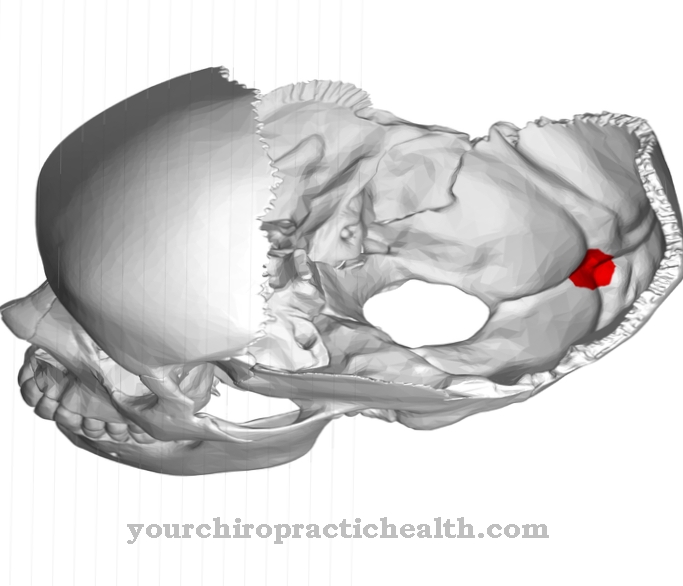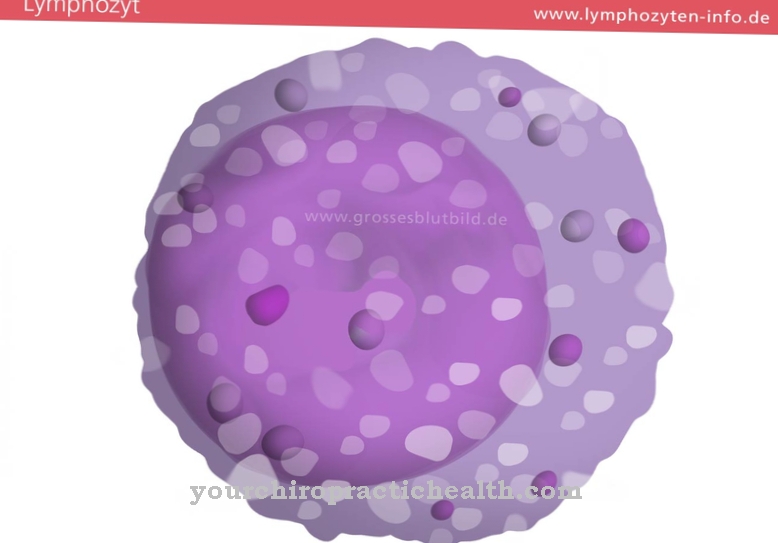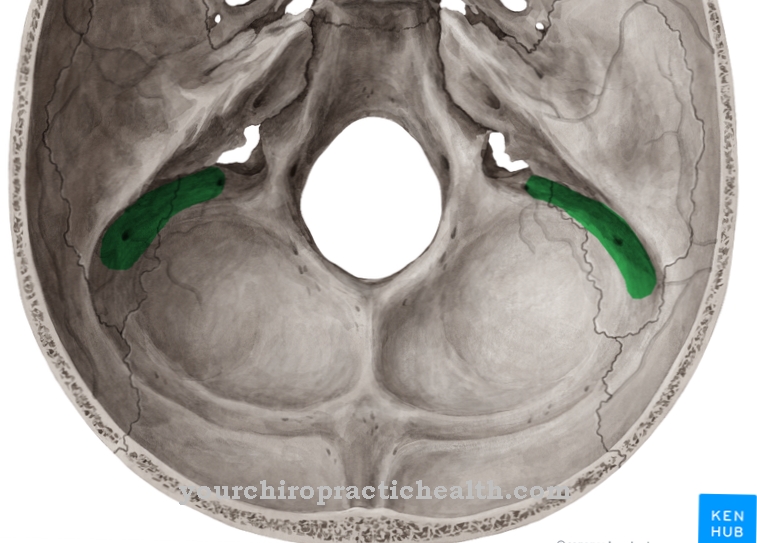The Adrenal cortex as part of the adrenal gland represents an important endocrine gland. Its hormones control the mineral metabolism, the physical stress reaction and the sexual function. Diseases of the adrenal cortex can lead to serious hormonal malfunctions.
What is the adrenal cortex?
The Adrenal cortex Together with the adrenal medulla, they form a paired endocrine gland called the adrenal gland. Everyone has two adrenal glands. They are located on the upper poles of both kidneys. Functionally, the adrenal glands represent two different organs.
While the adrenal cortex produces steroid hormones and is involved in the mineral, water and sugar balance, the adrenal medulla has a decisive influence on the sympathetic nervous system with the help of the hormones adrenaline and noradrenaline. The adrenal cortex, which is also called the Cortex glandulae suprarenalis looks yellow due to its lipid content.
As the cortex, it forms the outer part of the adrenal gland. It produces over 40 different steroid hormones called corticosteroids. In tribal history, the bark and pulp of fish represent two separate organs. In amphibians and reptiles, both organs were already attached to each other. It is only in mammals and birds that the adrenal cortex and the adrenal medulla are so closely connected that they can be viewed as a unit outwardly despite their different functions.
Anatomy & structure
As already mentioned, the adrenal cortex encloses the adrenal medulla and together with it forms the adrenal gland. Both adrenal glands are arranged in pairs and each occupy the upper poles of the kidneys. They are surrounded by a fine capsule of connective tissue. The adrenal cortex can be divided into three layers. The outer layer, too Zona glomerulosa called, is arranged in a ball shape in humans. It produces the hormone aldosterone for the mineral metabolism and has a total share of 15 percent in the adrenal cortex. The middle class, the Zona fasciculata. It is responsible for the production of glucocorticoids such as cortisol. With a comparatively small proportion of about 7 percent, the lower section of the adrenal cortex controls the Zona reticulariswho have favourited the formation of sex hormones.
However, all three zones are dynamic. Their expression changes constantly in the course of life. After puberty, their proportions shift in favor of the zona glomerulosa and zona reticularis. The delimitation of the two functional parts of the adrenal glands is also expressed through their different origins. While the adrenal cortex is of mesodermal origin, the adrenal medulla is originally formed from nerve cells.
Function & tasks
The adrenal cortex controls both the mineral metabolism and the sugar balance, releases so-called stress hormones during stress and is involved in the formation of sex hormones. Despite seemingly different functions, they all have in common that they are dependent on steroid hormones (corticosteroids). The synthesis of all hormones in the adrenal cortex takes place via cholesterol, also called cholesterol.
The hormone aldosterone is produced in the zona glomerulosa. This hormone maintains the balance between the sodium and potassium levels in the blood.
In the middle zone, the zona fasciculata, the synthesis of the so-called glucocorticoids, including cortisol, takes place. Cortisol is a stress hormone and has a major impact on blood sugar levels. A stress reaction requires an increased release of energy, which can only be guaranteed by the rapid provision of glucose from the body's own proteins. So with the release of cortisol, the blood sugar level also rises.
The third zone, the so-called zona reticularis, mainly produces androgens, which act as precursors of sex hormones. The formation of steroid hormones is embedded in the entire regulatory mechanism of the hormonal system. The pituitary gland produces a hormone that regulates the function of the adrenal gland, which is also known as ACTH. Disturbances in this control mechanism sometimes lead to serious hormone-related diseases. The causes of these diseases can be found primarily in the adrenal cortex or secondarily in the pituitary gland.
Illnesses & ailments
Due to the many hormones produced in the adrenal cortex, different clinical pictures can arise. Well-known hormonal disorders are expressed, for example, as Conn's syndrome, Cushing's syndrome or Addison's disease. Conn syndrome is based on the overproduction of the hormone aldosterone and is also called primary hyperaldosteronism.
It is characterized by a potassium deficiency and is a rare cause of high blood pressure. Symptoms of this disease include high blood pressure, angina pectoris, headache, shortness of breath and cardiac arrhythmias. The increased production of aldosterone can be caused by genetic causes, an adrenal adenoma, or an enlargement of the adrenal cortex.
Too much cortisol is released in Cushing's syndrome. This increases the blood sugar level and suppresses the immune system. Characteristic symptoms are full moon face, trunk obesity, diabetes, increased blood pressure, edema and increased susceptibility to infections. The increased cortisol production can be caused primarily by an adenoma in the adrenal cortex or secondarily by diseases of the pituitary gland.
Treatment is based on the underlying condition. An underproduction of cortisol leads to what is known as Addison's disease. Addison's disease is characterized by general weakness, susceptibility to infection, low blood pressure, indigestion, weight loss and brown discoloration of the skin. The low production of cortisol can be caused primarily by diseases of the adrenal cortex, secondarily by disorders of the pituitary gland and tertiary by regulatory disorders during treatment with corticoids.
If, for example, a cortisone treatment is stopped abruptly, the so-called Addison's crisis often occurs because the control mechanism of the body's own cortisol synthesis only works after a delay. Primary dysfunction of the parathyroid gland is often caused by infections, autoimmune diseases or tumors and is sometimes also genetic.

























.jpg)


